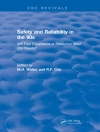Tourism throughout the world raises environmental issues that are often concerned with conflicting rights and responsibilities: the inherent right of mankind to travel, the no-less inherent right of indigenous people to guard their environmental heritage, and the responsibility of governments – local, national or (in the unique case of Antarctica) international – to protect environments over which they exercise stewardship. Additionally, the presence of international commercial enterprises, especially marine and other mass transport modes, represent unique governance challenges.This book deals mainly with environmental issues and the management implications arising from polar tourism, one of the fastest-growing sectors of world tourism. However, many of the issues discussed here arise no less urgently in temperate and tropical wilderness areas, and indeed in any region where sensitive environments are subjected to mass tourism. The principles and guidelines discussed here are of interest and practical use in tourism studies generally.
Innehållsförteckning
Chapter 1. Arctic and Antarctic: Polar Regions and Environments
Chapter 2. Arctic Tourism: History and Development
Chapter 3. Antarctic Tourism: History and Development
Chapter 4. Tourism in Changing Polar Environments
Chapter 5. Wilderness Tourism: Challenges and Techniques
Chapter 6. Managing Shipborne Tourism
Chapter 7. Polar Cultural and Heritage Tourism
Chapter 8. Southern Oceans and Antarctic Tourism
Chapter 9. Managing Polar Tourism: A Way Forward
Om författaren
Dr John M. Snyder gained wilderness tourism experience as an Alaska Registered Guide and has applied his environmental management knowledge to assist Arctic governments and Native People. Those experiences were then used to evaluate tourism management issues in Antarctica and South Georgia. Most recently, he was a co-lead author of the Arctic Councilâs 2009 Arctic Marine Shipping Assessment.












